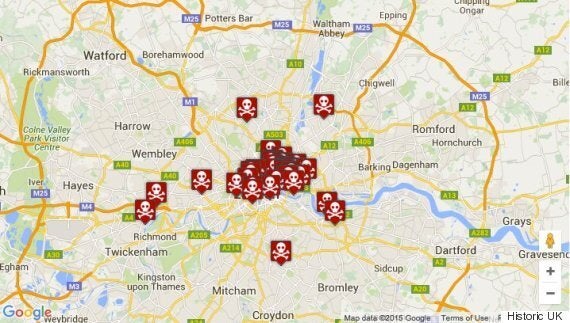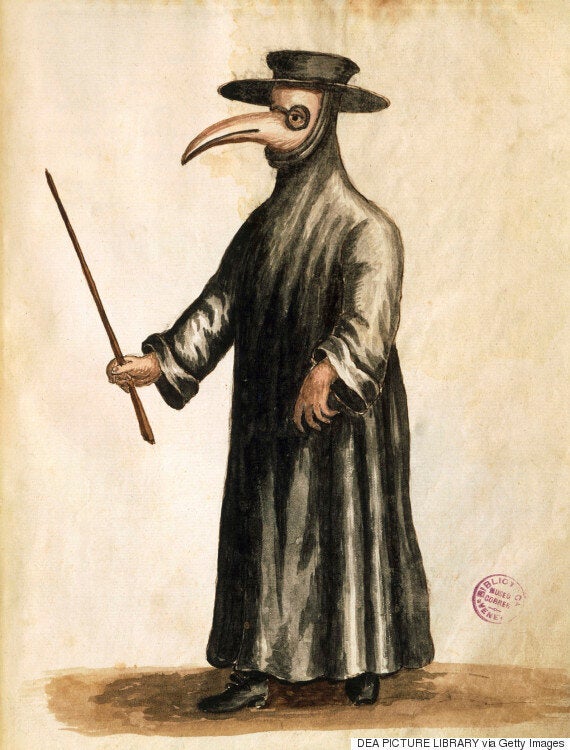Up to 60% of London’s population is believed to have perished in the Black Death and now a map revealing where much of the victims of the deadly outbreak still lie has been published online.
Pinpointing the reputed ‘plague pits’ of London is an ongoing interactive project by Historic UK, which highlights mass graves across the capital.
As churchyards overflowed with bodies during the 14th century pandemic, new pits were hastily dug to accommodate the dead.

The interactive map can be viewed here
Locating the graves is not an exact science, and short of excavating the entire city, the site has relied on historical sources including Daniel Defoe’s A Journal of the Plague Year, first published in 1722, among more modern channels including social media, as well as ongoing archaeological digs.
Deborah Johnson, who is working on the project, told Huffington Post UK: "We have had lots of interaction from people regarding other possible plague pit sites in London, allowing us to update our information accordingly. We aim to produce the most accurate and comprehensive map of London’s plague pits!"
Aldgate Underground Station is one of the sites, as is Golden Square in Soho, of which Lord Macaulay wrote in 1685:
'[it was] a field not to be passed without a shudder by any Londoner of that age. There, as in a place far from the haunts of men, had been dug, twenty years before, when the great plague was raging, a pit into which the dead carts had nightly shot corpses by scores. It was popularly believed that the earth was deeply tainted with infection, and could not be disturbed without imminent risk to human life.'
Charterhouse Square in Farringdon became the largest mass grave in London during the Black Death, with an estimated 50,000 bodies having been buried there.
A Europe Crossrail project unearthed many skeletons on the site in 2013 and this year an excavation of the Bedlam Hospital burial ground began at the Liverpool Street site.

An illustration of a plague doctor in Venice wearing a mask said to protect them from infected air
The Bedlam burial ground was in use from 1569 to at least 1738, spanning the start of the period of Elizabethan explorers, the English civil wars, the Restoration of the Monarchy, Shakespeare’s plays, the Great Fire of London and numerous plague outbreaks.
The recent excavation suggests that 30,000 Londoners were buried at Bedlam between 1569 and 1738.

One of the skeletons found in the City of London in 2013
Until recently it had been believed the culprit for the deadly disease was Bubonic Plague – a bacterium spread by the fleas of infected rats. Historically they have been referred to as one and the same.
But last year new evidence emerged suggesting the infection was in fact airborne – Pneumonic Plague – which settles in the lungs of the victim and spreads swiftly from person to person through their infected breath.
Records indicate around 60% of London’s population died during the deadly pandemic, which spread from Europe to England in 1348 – the equivalent of nearly 5million people today.